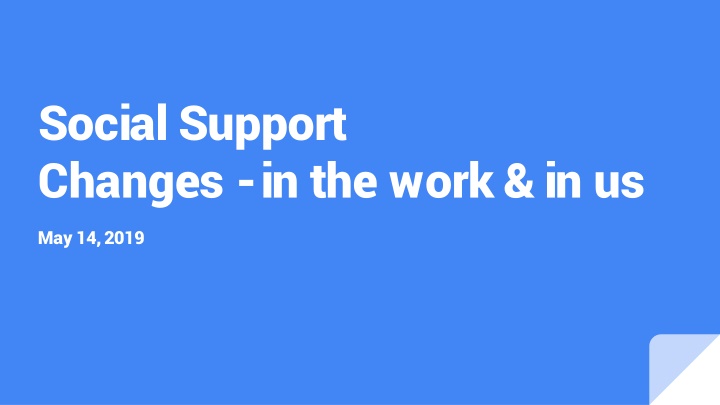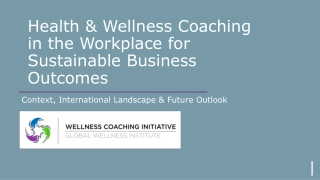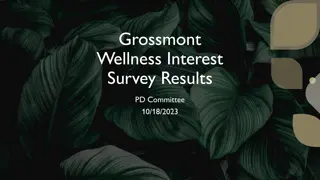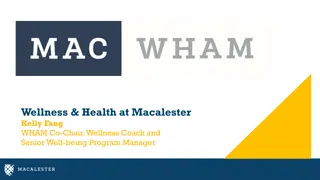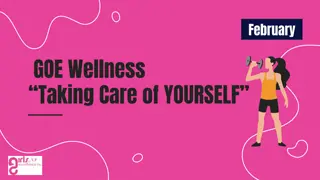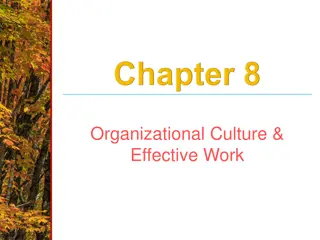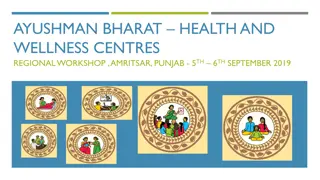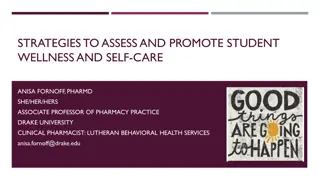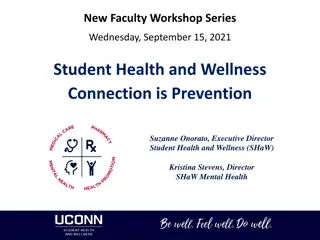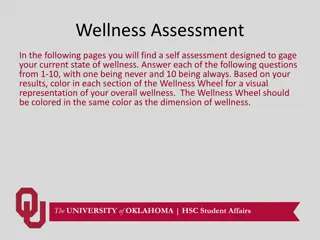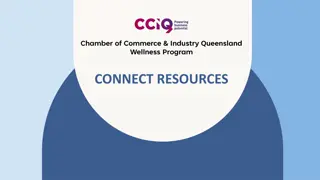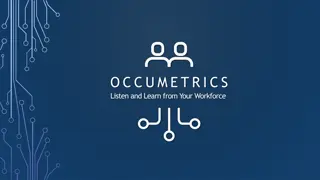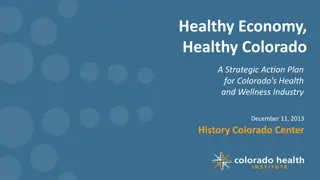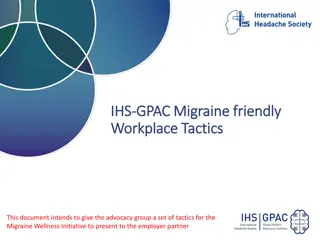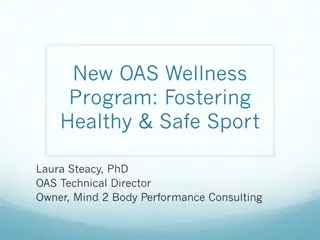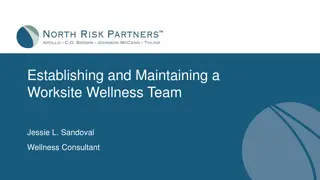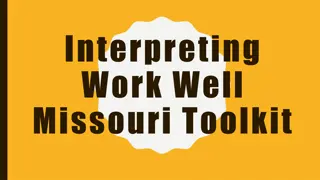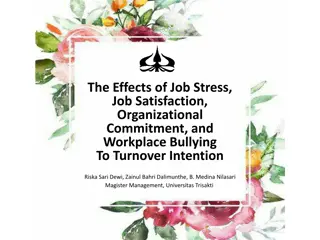Strategies for Wellness and Organizational Health in the Workplace
Explore effective strategies to support individual wellness and enhance organizational health in the workplace. Topics include applying Zone of Control Thinking, identifying resources for well-being, and reflecting on changes in work dynamics. Encourage shared support among team members and prioritize self-care for a productive work environment.
Download Presentation

Please find below an Image/Link to download the presentation.
The content on the website is provided AS IS for your information and personal use only. It may not be sold, licensed, or shared on other websites without obtaining consent from the author.If you encounter any issues during the download, it is possible that the publisher has removed the file from their server.
You are allowed to download the files provided on this website for personal or commercial use, subject to the condition that they are used lawfully. All files are the property of their respective owners.
The content on the website is provided AS IS for your information and personal use only. It may not be sold, licensed, or shared on other websites without obtaining consent from the author.
E N D
Presentation Transcript
Social Support Changes -in the work & in us May 14, 2019
Year-Long Goals 1. Acknowledge the reality of the current organizational health of PPS and the impact on the individual. 2. Create shared understanding around organizational health, resiliency and compassion fatigue. 3. Identify resources and strategies to support individual wellness and build organizational health. 4. Incorporate resources and strategies to support individual wellness and build organizational health.
Today We Will... 1. Apply Zone of Control Thinking 2. Share the ways we do and can support one another on this team 3. Reflect on changes in the work and in us 4. Reflect on how we engage in self-care
Applying Zone of Control Thinking According to research done by Stephen Covey, most of us have no control over 50% of what happens in the workplace, some influence over 35%, and a lot of control over about 15%. This means that we need to think about our circumstances and recognize where we have control and influence, and where we don t. We do much better when we focus our efforts on positive change where we have control and influence. -- Patricia Fisher
Zone of Control 15% have control What you have control over... 50% no control & no influence 35% some influence
Strategies we use when dealing with circumstances outside of our control We can accept it We can change it We can change the way that we deal with it We can escape from it
Things you find worthwhile.... Triads: please choose a recorder, reporter, time keeper When you think about your workday, what things do you do that you enjoy or find worthwhile? Record the answers in the left hand column Next, ask: Where do they fit in terms of your zone of control? Tick the appropriate column (some may be seen as falling in more than one column)
Coming back together as a whole group... Share Out Novel Ideas Only
Now on your own... Step 1 When you think about your workday, what things do you find troublesome?
On your own continued... Step 2 Rank each concern you recorded on a scale from 1-5 where a 1 is relatively minor and a 5 is very troubling.
On your own continued Step 3 Choose a priority item from each of the three categories (full control, influence, no control) to reflect and journal about.
Journal Reflection Questions 1. For the concerns you have control over, what would be the most helpful and positive strategies you could use? 2. For the concerns that you have some influence over, what would be the most helpful and positive strategies you could use? 3. For the concerns that you have no control over, what would be the most helpful and positive strategies you could use? (Remember that these will typically fall inside either acceptance, changing the way we deal with it or escaping from it).
How do we support one another? The amount and quality of social support and companionship that a worker receives is an important predictor of health and well-being and provides a critical buffer against daily work stresses. FORMAL: INFORMAL:
Changes -in the work & in us There have been many profound changes in the workplace and society at large over the past 25 years -these have combined to place a whole new set of pressures and stresses on individuals, families, workplace and social institutions. The change environment has also opened up any new opportunities and provided important new resources and advantages. Patricia Fisher Building Resilient Teams
Changes -in the work & in us Reflect on the following questions in your journal: What are the biggest changes you have experienced over your career? Which did you see as positive and which are more difficult?
Changes -in the work, and in us Find your people Break into groups by age: Under 35-45 45-55 55-65+
Changes-in the work Share with your group: What are the biggest changes you have experienced over your career? Which did you see as positive and which where more difficult?
Changes -in us Self-Care for Teachers Self-Care Habit Ideas Self-Care Inventory Mark X for what you already do. Mark an O for what you wish you did more. Journal your O statements
Then... Now...
